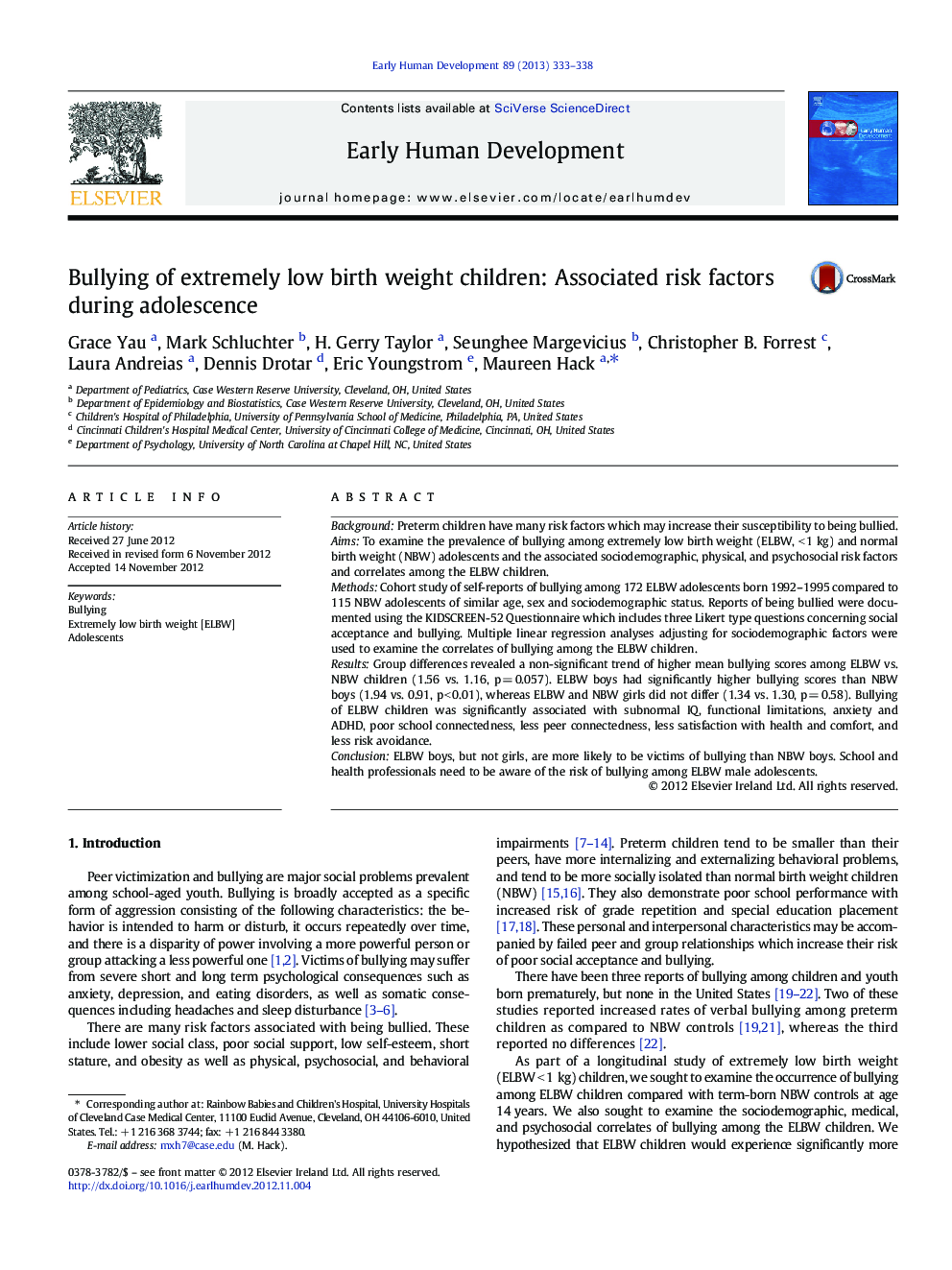| Article ID | Journal | Published Year | Pages | File Type |
|---|---|---|---|---|
| 6172022 | Early Human Development | 2013 | 6 Pages |
BackgroundPreterm children have many risk factors which may increase their susceptibility to being bullied.AimsTo examine the prevalence of bullying among extremely low birth weight (ELBW, < 1 kg) and normal birth weight (NBW) adolescents and the associated sociodemographic, physical, and psychosocial risk factors and correlates among the ELBW children.MethodsCohort study of self-reports of bullying among 172 ELBW adolescents born 1992-1995 compared to 115 NBW adolescents of similar age, sex and sociodemographic status. Reports of being bullied were documented using the KIDSCREEN-52 Questionnaire which includes three Likert type questions concerning social acceptance and bullying. Multiple linear regression analyses adjusting for sociodemographic factors were used to examine the correlates of bullying among the ELBW children.ResultsGroup differences revealed a non-significant trend of higher mean bullying scores among ELBW vs. NBW children (1.56 vs. 1.16, p = 0.057). ELBW boys had significantly higher bullying scores than NBW boys (1.94 vs. 0.91, p < 0.01), whereas ELBW and NBW girls did not differ (1.34 vs. 1.30, p = 0.58). Bullying of ELBW children was significantly associated with subnormal IQ, functional limitations, anxiety and ADHD, poor school connectedness, less peer connectedness, less satisfaction with health and comfort, and less risk avoidance.ConclusionELBW boys, but not girls, are more likely to be victims of bullying than NBW boys. School and health professionals need to be aware of the risk of bullying among ELBW male adolescents.
